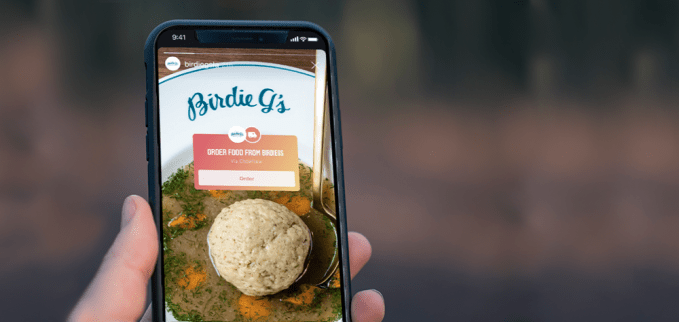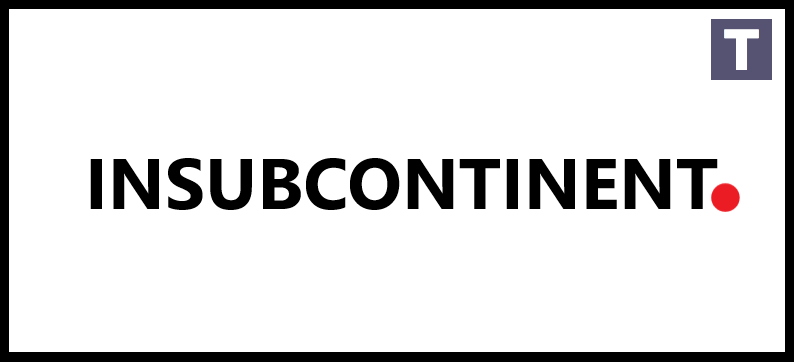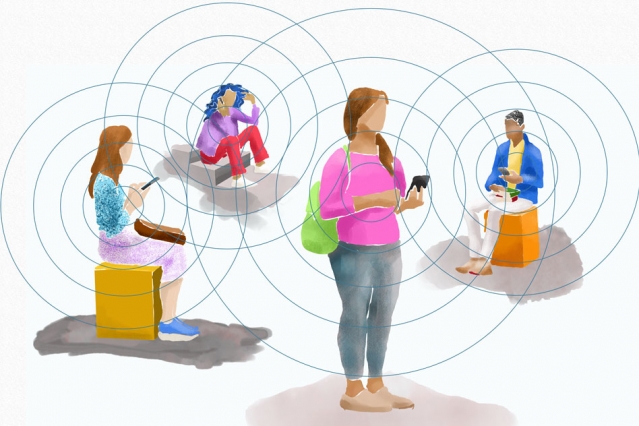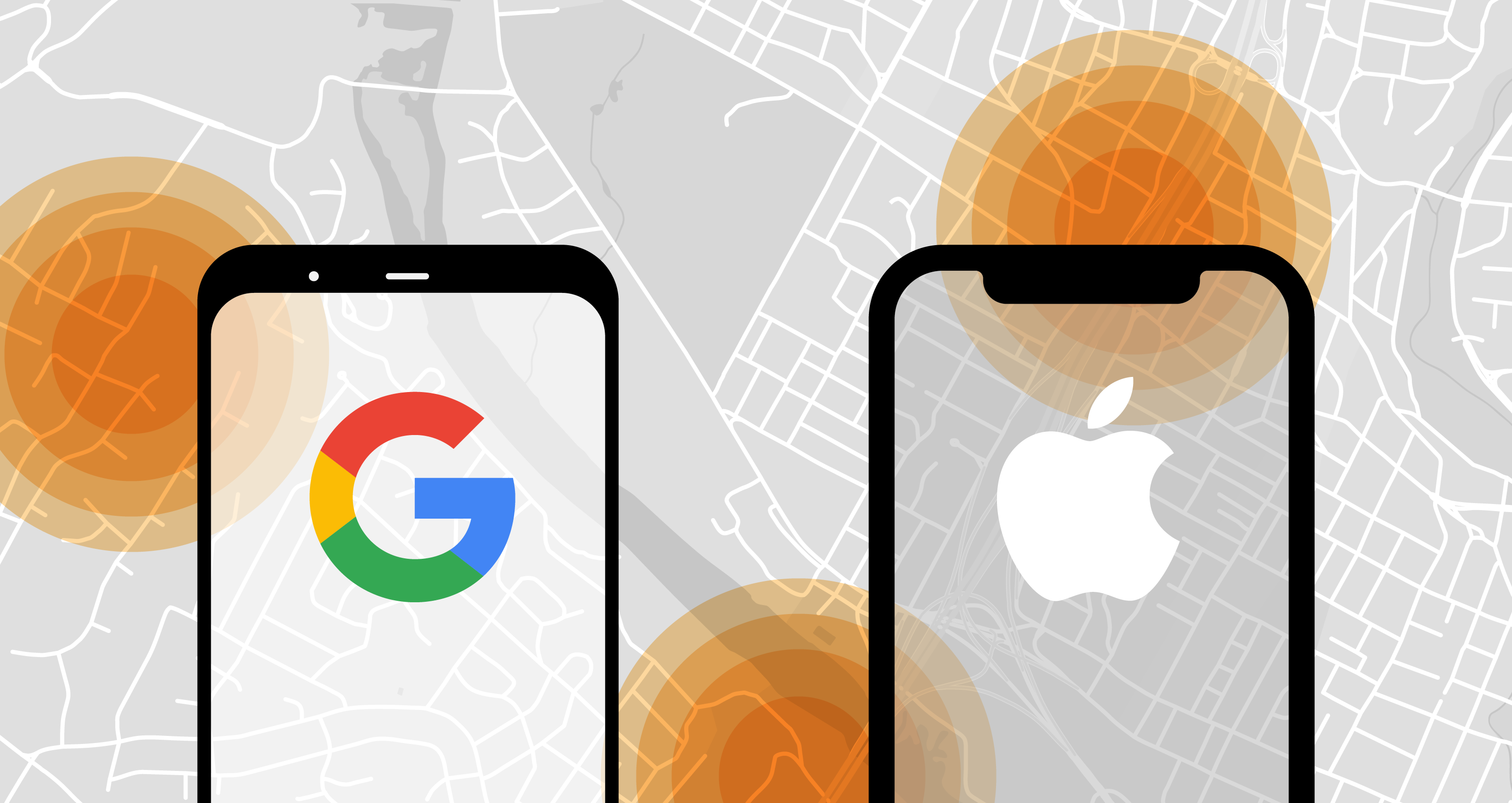Music
Trailers
DailyVideos
India
Pakistan
Afghanistan
Bangladesh
Srilanka
Nepal
Thailand
Iraq
Iran
Russia
Brazil
StockMarket
Business
CryptoCurrency
Technology
Startup
Trending Videos
Coupons
Football
Search
Download App in Playstore
Download App
Best Collections
Technology

Cognizant, one of the largest tech and consulting companies in the Fortune 500, has confirmed it was hit by a ransomware attack.
Details remain slim besides a brief statement on its site, confirming the incident.
&Cognizant can confirm that a security incident involving our internal systems, and causing service disruptions for some of our clients, is the result of a Maze ransomware attack,& the statement read. &Our internal security teams, supplemented by leading cyber defense firms, are actively taking steps to contain this incident.&
The New Jersey-headquarteredIT giant said it was engaging with the law enforcement.
The company, which offers a range of services including IT consultation to clients in more than 80 countries, posted $16.8 billion in revenue last year. The decades-old firm also maintains a business agreement with Facebook to help the social giant moderate content on its platform. Cognizant employs about 290,000 people, most of whom live in India.
When reached, Cognizant spokesperson Richard Lacroix declined to comment beyond the statement.
Maze is not like typical data-encrypting ransomware. Maze not only spreads across a network, infecting and encrypting every computer in its path, it also exfiltrates the data to the attackers& servers where it is held for ransom. If a ransom isn&t paid, the attackers publish the files online. However, a website known to be associated with the Maze attackers, has not yet advertised or published data associated with Cognizant.
The FBI privately warned businesses in December of an increase in Maze-related ransomware incidents.
Since the warning, several major companies have been hit by Maze, including cyber insurer Chubb, accounting giant MNP, a law firm and an oil company.
According to Bleeping Computer, which first reported the attack, the Maze hackers denied responsibility for the attack.
&That does not mean Maze was not responsible,& said Brett Callow, a threat analyst and ransomware expert at security firm Emsisoft. &At some point in the last three weeks, Maze also hit two Manitoba law firms, neither of which has been listed.&
&Itpossible the group is holding off naming the firms and publishing any data pending the outcome of negotiations, and that could be the case with Cognizant too,& said Callow.
- Details
- Category: Technology Today
Read more: Cognizant confirms Labyrinth ransomware attack, says clients deal with interruption
Write comment (94 Comments)Welcome back to ThisWeek in Apps, the Extra Crunch series that recaps the latest OS news, the applications they support and the money that flows through it all.
The app industry is as hot as ever, with arecord 204 billion downloads in 2019and $120 billion in consumer spending in 2019, according to App Annie&State of Mobile& annual report. People are now spending 3 hours and 40 minutes per day using apps, rivaling TV. Apps aren&t just a way to pass idle hours — they&re a big business. In 2019, mobile-first companies had a combined $544 billion valuation, 6.5x higher than those without a mobile focus.
In this Extra Crunch series, we help you keep up with the latest news from the world of apps, delivered on a weekly basis.
This week we&re continuing to look at how the coronavirus outbreak is impacting the world of mobile applications, including a dig into Housepartybig surge, layoffs at VSCO, Googlelaunch of a &Teacher Reviewed& tag, Bumblevirtual dating, plus changes to Instagram in support of small business and live streaming, among other things. Also this week, Google changed its Play Store guidelines, TikTok launched parental controls, a report suggested Apple may be expanding its Search Ads and more.
Coronavirus Special Coverage
Instagram adds features for supporting small businesses during pandemic

- Details
- Category: Technology Today
Cities around the world have become home this decade to distributed tech teams and homegrown startup successes. Each of these additional layers of experience and specialization help to make each local community stronger, like what began happening in Silicon Valley many decades ago.
Now layoffs are striking deep into these fragile, complex ecosystems.
Yes, companies in San Francisco and other tech metros are seeing big cuts, as you can read all about on TechCrunch this week. But the satellite offices also seem to be taking big hits, as Natasha Mascarenhas covered. Data from Layoffs.fyi shows thousands of jobs bleeding out in places like Salt Lake City, Las Vegas and Louisville to name a few.
The immediate reason this is particularly bad is that tech jobs have a multiplier on jobs in other local industries, particularly where there aren&t that many tech jobs. But the bigger long-term risk is that people who might be starting the next company in your city don&t get the hands-on experience and the connections locally and globally that come distributed teams. How long will it take many of the hubs that were going strong just a couple months ago to recover now?
Of course, the even bigger opposing trend is remote work now that everyone is doing it. Will the future founder who was going to move to San Francisco for networking purposes just stay in Louisville, and have a local HQ or just keep it remote-first? Will we still need all that commercial real estate in the Bay Area, actually?
TechCrunch is covering the downs-and-ups of startup hubs during the pandemic (see Extra Crunch for more on Salt Lake City this week, actually). Want to talk about what your city is doing to keep its startup scene strong? Email me at This email address is being protected from spambots. You need JavaScript enabled to view it. and letdiscuss.

Investors rethink consumer and edtech investing
For our first investor survey this week, Josh Constine and Arman Tabatabai talked to 17 top social investors about the impact of COVID-19 on the category. HereWayne Hu of SignalFire, excerpted from the full article on Extra Crunch.
There are, however, other social trends that were already picking up steam before COVID-19 that may further accelerate now. Many of these may be newer behaviors that sound dumb or are hard to explain, but ultimately provide value. Peloton sounded silly to many before they became popular, and there are several other companies now bridging the gap between consumers, trainers and fellow participants to bring the in-person social phenomenon of spin cycle and fitness boutiques into the living room. Tempo, a SignalFire portfolio company, is the first to offer high-intensity strength training complete with weights in the home. Beyond the convenience, 3D sensors automatically track reps and weights and users also receive targeted feedback on form from world-class trainers aided by real-time motion tracking — something that would be too expensive for most consumers otherwise. Coronavirus will be a catalyst for many to experience this and other accelerating trends for the first time.
EC members, don&t miss their social overview survey last week.
Next, Natasha and Arman talked to leading edtech investors for Extra Crunch about how the new coronavirus is impacting their companies. Many startups in the category have suddenly had much brighter futures — with some new challenges. HereTetyana Astashkina of Learn Launch:
A lot of our companies across all segments are offering their products for free. User (teacher) training has always been key to successful product adoption. All of the training happens online now which is new and needs adjustment. Also, the timelines to respond to customer inquiries are very compressed which puts pressure on companies, especially because of eternally limited resources.
K-12 districts need to have budgets in place by the end of June for the next school year. So selling, while giving the product away for free and while supporting un-trained users is going to be a scramble. Now imagine being a cash-starved start-up trying to deal with your own homeschooling needs…

The latest venture shifts in the COVID-19 era
Many VCs continue to say they are open for biz while others say they are ‘focused on helping portfolio companies.& So herewhat we&re seeing on the fundraising front this week.
First, leading seed-stage VC Y Combinator has scaled down its pro-rata program of recent years. It had taken a 7% stake in every company that has raised a priced seed or Series A round since it began the policy in 2015, totaling hundreds of rounds in hundreds of companies.
But it has also expanded its class size dramatically in recent years. Eventually, as described by CEO Michael Seibel, in a memo to companies this week obtained by Jon Shieber for TechCrunch, it couldn&t do both. So starting next month, it will be doing pro-rata for YC companies on a case-by-case basis and at a flat 4%.
This change likely would have happened anyway, but it happens right when more startups than ever are looking for sources of cash.
Overall, seed money appears to continue to be in sharp decline — a trend that had already accelerated before the pandemic, Alex Wilhem detailed on Extra Crunch.
The mortality rate continues to increase across the board, too. When investors give up on selling a company, they send them to Sherwood Partners, a &restructuring firm& that acts as a sort of startup undertaker (mainly selling off the IP and other parts). In an interview with Connie Loizos for Extra Crunch this week, founder Marty Pichinson says they are winding down two to three companies per day, up from two to four per week a few years ago. &We&re in companies that raised $10 million to $25 million, to companies that raised up to $1.5 billion,& he told her. &It doesn&t matter what size they are; when they come to us, they&re all broke. If we&re closing it down to clean up and monetize what we can, they are basically in the same position, whether they raised $20 million or they were once a billion-dollar business.&
Across the week
TechCrunch
Tech for good during COVID-19: Pivots and partnerships to help people deal
This venture firm is offering fast funding in a time of uncertainty
How I Podcast: First Draft and Track Changes& Sarah Enni
Extra Crunch
As COVID-19 pummels global economy, 8 new companies join the $100M ARR club
Punitive liquidation preferences return to VC — don&t do it
Traditional sales and marketing strategies won&t see you through this crisis
How Adobe shifted a Las Vegas conference to executives& living rooms in less than 30 days
Dear Sophie: How do I extend my visa status without leaving the US?
#EquityPod
From Alex:
Turning to the show, as has been the case every single week since we cannot recall when, we had a hell of a packed agenda.; there were new funds to talk about, there were rounds aplenty. As the unicorn era hands the baton to the COVID-19 downturn, therestillmore than we can get through each week.
But we did manage all that follows:
- Lightspeedraised a host of new funds worth billions of dollars, including $1.83 billion in capital for later-stage deals and $1.5 billion to pour more capital into its international investments.
- Andreessen Horowitzwants to put together a second crypto-focused fundworth $450 million. Thatmore than last time, and we had questions.
- Corigin Venturesraised its first institutional fund at $36 million, effectively stepping out of complete control from its parent organization, Corigin Real Estate.
- Stripe raised $600 million more, at a flat valuation to its preceding round. The payments company is now worth around $36 billion. The news dropped out of nowhere, and probably means that the eventual Stripe IPO is far, far away.
- Robinhood israising new capital, which caught our eye.
- Carta, which helps manage equity for startups,laid off 16 percent of its staffas detailed inan emotional memoby the companyCEO Henry Ward. Then, the plot thickened when news broke that it&sraising a new round of funding that would value it at $3 billion.
- LucidandEveree, two Utah-based companies raised capital this week, right after we saw Podium raise the week before.$52 million for Lucid, makers of Lucidchart,and $10 million fo Everee, a payroll software startup with a fun twist.
- But we weren&t done yet, as we had to talkabout Airbnbnew debt work; Danny made the point that ithardly cheap capital for the firm to raise, possibly adding pressure to Airbnb later on. This is another company that will not go public in 2020.
- Savi raised $6 millionto help students pay student loans,while Frank raised $5 million to help students avoid racking them up.
- Despite tight school budgets,Labster landed a dealwith the California Community Colleges which tells us a bit abouthow edtech optimism is turning into actual dollars.
What we&re up to:
Extra Crunch Live: Join Aileen Lee, Ted Wang for Q-A on 4/20 at 10:30am PT/1:30pm ET
Apply to compete in Startup Battlefield at Disrupt SF 2020
Extra Crunch members save money with Partner Perks and event discounts
Extra Crunch is now available in Puerto Rico, Guam and American Samoa
- Details
- Category: Technology Today
Read more: Startups Weekly: Exactly how will tech centers weather the pandemicCities around the
Write comment (95 Comments)One of the best tools we have to slow the spread of the coronavirus is, as you have no doubt heard by now, contact tracing. But what exactly is contact tracing, who does it and how, and do you need to worry about it?
In short, contact tracing helps prevent the spread of a virus by proactively finding people at higher risk than others due to potential exposure, notifying them if possible, and quarantining them if necessary. Ita proven technique, and smartphones could help make it even more effective — but only if privacy and other concerns can be overcome.
Contact tracing, from memory to RAM
Contact tracing has been done in some form or another as long as the medical establishment has understood the nature of contagious diseases. When a person is diagnosed with an infectious disease, they are asked whom they have been in contact with over the previous weeks, both in order to determine who may have been infected by them and perhaps where they themselves were infected.
Until very recently, however, the process has relied heavily on the recall of people who are in a highly stressful situation and, until prompted, were probably not paying special attention to their movements and interactions.
This results in a list of contacts that is far from complete, though still very helpful. If those people can be contacted and their contacts likewise traced, a network of potential infections can be built up without a single swab or blood drop, and lives can be saved or important resources better allocated.

You might think that has all changed now what with modern technology and all, but in fact contact tracing being done at hospitals right now is almost all still of the memory-based kind — the same we might have used a hundred years ago.
It certainly seems as if the enormous digital surveillance apparatus that has been assembled around us over the last decade should be able to accomplish this kind of contact tracing easily, but in fact itsurprisingly useless for anything but tracking what you are likely to click on or buy.
While it would be nice to be able to piece together a contagious personweek from a hundred cameras spread throughout the city and background location data collected by social media, the potential for abuse of such a system should make us thankful it is not so easy as that. In other, less dire circumstances the ability to track the exact movements and interactions of a person from their digital record would be considered creepy at best, and perhaps even criminal.
But itone thing when an unscrupulous data aggregator uses your movements and interests to target you with ads without your knowledge or consent — and quite another when people choose to use the forbidden capabilities of everyday technology in an informed and limited way to turn the tide of a global pandemic. And thatwhat modern digital contact tracing is intended to do.
Bluetooth beacons
All modern mobile phones use wireless radios to exchange data with cell towers, Wi-Fi routers, and each other. On their own, these transmissions aren&t a very good way to tell where someone is or who they&re near — a Wi-Fi signal can travel 100 to 200 feet reliably, and a cell signal can go miles. Bluetooth, on the other hand, has a short range by design, less than 30 feet for good reception and with a swiftly attenuating signal that makes it unlikely to catch a stray contact from much further out than that.

We all know Bluetooth as the way our wireless earbuds receive music from our phones, and thata big part of its job. But Bluetooth, by design, is constantly reaching out and touching other Bluetooth-enabled devices — ithow your car knows you&ve gotten into it, or how your phone detects a smart home device nearby.
Bluetooth chips also make brief contact without your knowledge with other phones and devices you pass nearby, and if they aren&t recognized, they delete each other from their respective memories as soon as possible. But what if they didn&t?
The type of contact tracing being tested and deployed around the world now uses Bluetooth signals very similar to the ones your phone already transmits and receives constantly. The difference is it just doesn&t automatically forget the other devices it comes into contact with.
Assuming the system is working correctly, what would happen when a person presents at the hospital with COVID-19 is basically just a digitally enhanced version of manual contact tracing. Instead of querying the personfallible memory, they query the phonemuch more reliable one, which has dutifully recorded all the other phones it has recently been close enough to connect to. (Anonymously, as we&ll see.)
Those devices — and itimportant to note that itdevices, not people —would be alerted within seconds that they had recently been in contact with someone who has now been diagnosed with COVID-19. The notification they receive will contain information on what the affected person can do next: Download an app or call a number for screening, for instance, or find a nearby location for testing.
The ease, quickness, and comprehensiveness of this contact tracing method make it an excellent opportunity to help stem the spread of the virus. So why aren&t we all using it already?
Successes and potential worries

In fact digital contact tracing using the above method (or something very like it) has already been implemented with millions of users, apparently to good effect, in east Asia, which of course was hit by the virus earlier than the U.S. and Europe.
In Singapore the TraceTogether app was promoted by the government as the official means for contact tracing. South Korea saw the voluntary adoption of a handful of apps that tracked people known to be diagnosed. Taiwan was able to compare data from its highly centralized healthcare system to a contact tracing system it began work on during the SARS outbreak years ago. And mainland China has implemented a variety of tracking procedures through mega-popular services like WeChat and Alipay.
While it would be premature to make conclusions on the efficacy of these programs while they&re still underway, it seems at least anecdotally to have improved the response and potentially limited the spread of the virus.
But east Asia is a very different place from the U.S.; we can&t just take Taiwanplaybook and apply it here (or in Europe, or Africa, etc.), for myriad reasons. There are also valid questions of privacy, security, and other matters that need to be answered before people, who for good reason are skeptical of the intentions of both the government and the private sector, will submit to this kind of tracking.
Right now there are a handful of efforts being made in the U.S., the largest profile by far being the collaboration between arch-rivals Apple and Google, which have proposed a cross-platform contact tracing method that can be added to phones at the operating system.
The system they have suggested uses Bluetooth as described above, but importantly does not tie it to a personidentity in any way. A phone would have a temporary ID number of its own, and as it made contact with other devices, it exchanges numbers. These lists of ID numbers are collected and stored locally, not synced with the cloud or anything. And the numbers also change frequently so no single one can be connected to your device or location.
If and only if a person is determined to be infected with the virus, a hospital (not the person) is authorized to activate the contact tracing app, which will send a notification to all the ID numbers stored in the personphone. The notification will say that they were recently near a person now diagnosed with COVID-19 — again, these are only ID numbers generated by a phone and are not connected with any personal information. As discussed earlier, the people notified can then take whatever action seems warranted.
MIT has developed a system that works in a very similar way, and which some states are reportedly beginning to promote among their residents.
Naturally even this straightforward, decentralized, and seemingly secure system has its flaws; this article at the Markup gives a good overview, and I&ve summarized them below:
- Itopt-in. This is a plus and a minus, of course, but means that many people may choose not to take part, limiting how comprehensive the list of recent contacts really is.
- Itvulnerable to malicious interference. Bluetooth isn&t particularly secure, which means there are several ways this method could be taken advantage of, should there be any attacker depraved enough to do so. Bluetooth signals could be harvested and imitated, for instance, or a phone driven through the city to &expose& it to thousands of others.
- It could lead to false positives or negatives. In order to maintain privacy, the notifications sent to others would contain a minimum of information, leading them to wonder when and how they might have been exposed. There will be no details like &you stood next to this person in line 4 days ago for about 5 minutes& or &you jogged past this person on Broadway.& This lack of detail may lead to people panicking and running to the ER for no reason, or ignoring the alert altogether.
- Itpretty anonymous, but nothing is truly anonymous. Although the systems seem to work with a bare minimum of data, that data could still be used for nefarious purposes if someone got their hands on it. De-anonymizing large sets of data is practically an entire domain of study in data science now and itpossible that these records, however anonymous they appear, could be cross-referenced with other data to out infected persons or otherwise invade oneprivacy.
- Itnot clear what happens to the data. Will this data be given to health authorities later? Will it be sold to advertisers? Will researcher be able to access it, and how will they be vetted? Questions like these could very well be answered satisfactorily, but right now ita bit of a mystery.
Contact tracing is an important part of the effort to curb the spread of the coronavirus, and whatever method or platform is decided on in your area — it may be different state to state or even between cities — it is important that as many people as possible take part in order to make it as effective as possible.
There are risks, yes, but the risks are relatively minor and the benefits would appear to outweigh them by orders of magnitude. When the time comes to opt in, it is out of consideration for the community at large that one should make the decision to do so.
- Details
- Category: Technology Today
Read more: What is contact tracing
Write comment (94 Comments)
We discussed our initial impressions of &Devs& on an episode of the Original Content podcasta few weeks ago, shortly after the show launched on FX/Hulu. At the time, we observed that even the show made time for bits of Silicon Valley satire, the mood was mostly one of mystery and dread.
Now that we know the full story, it seemed like a good time to revisit our discussion. If anything, the dread increases over the course of the showfirst and only season, becoming oppressive and overwhelming as writer-director Alex Garland lays out the full implications of a mysterious quantum computing project known as Devs.
Our reactions to the storyheady philosophical atmosphere varied — Jordan found the whole thing a bit ponderous, while Anthony and Darrell were completely happy to follow Garland into arguments about determinism versus free will, and to debate the implications of the showfinal episode.
At the very least, we all agreed that therenothing on television quite like it. Plus, the show features strong performances from Nick Offerman as a tormented tech CEO and Alison Pill as the Devs projectsteely leader.
You can listen to our review in the player below, subscribe using Apple Podcastsor find us in your podcast player of choice. If you like the show, please let us know by leaving a review on Apple. You can also send us feedback directly. (Or suggest shows and movies for us to review!)
And if you&d like to skip ahead, herehow the episode breaks down: 0:00 Intro 0:18 &Devs& full season review 7:25 &Devs& spoiler discussion
- Details
- Category: Technology Today
Read more: Initial Content podcast: 'Devs' asks disturbing concerns about free choice
Write comment (99 Comments)Herea nice thing. Itnot revolutionary or life-changing, but itnice. And right now we can all use a little bit of nice. Earlier this month, Samsung announced an addition to its line of &eco-packing& that will turn TV boxes in a wide variety of different &furniture.& I use furniture in quotes here because it is, in fact, still cardboard.
As someone who has transformed a box or two into a piece of pet shelter in his time, however, I&m pretty on-board with the whole thing.

Ita bit like Nintendo Labo for grownups, with a QR code that unlocks instructions for transforming the containers into a wide range of different objects, including shelves, magazine racks and even cat houses. The longevity of each will be entirely dependent on usage and your specific cat.
To start, the boxes will be used to ship The Serif, Frame and Sero TV models. They&ll be shopping with the TVs starting this month. Samsungapproach earned it a CES Innovation Award back in January.
- Details
- Category: Technology Today
Page 939 of 1437

 13
13





